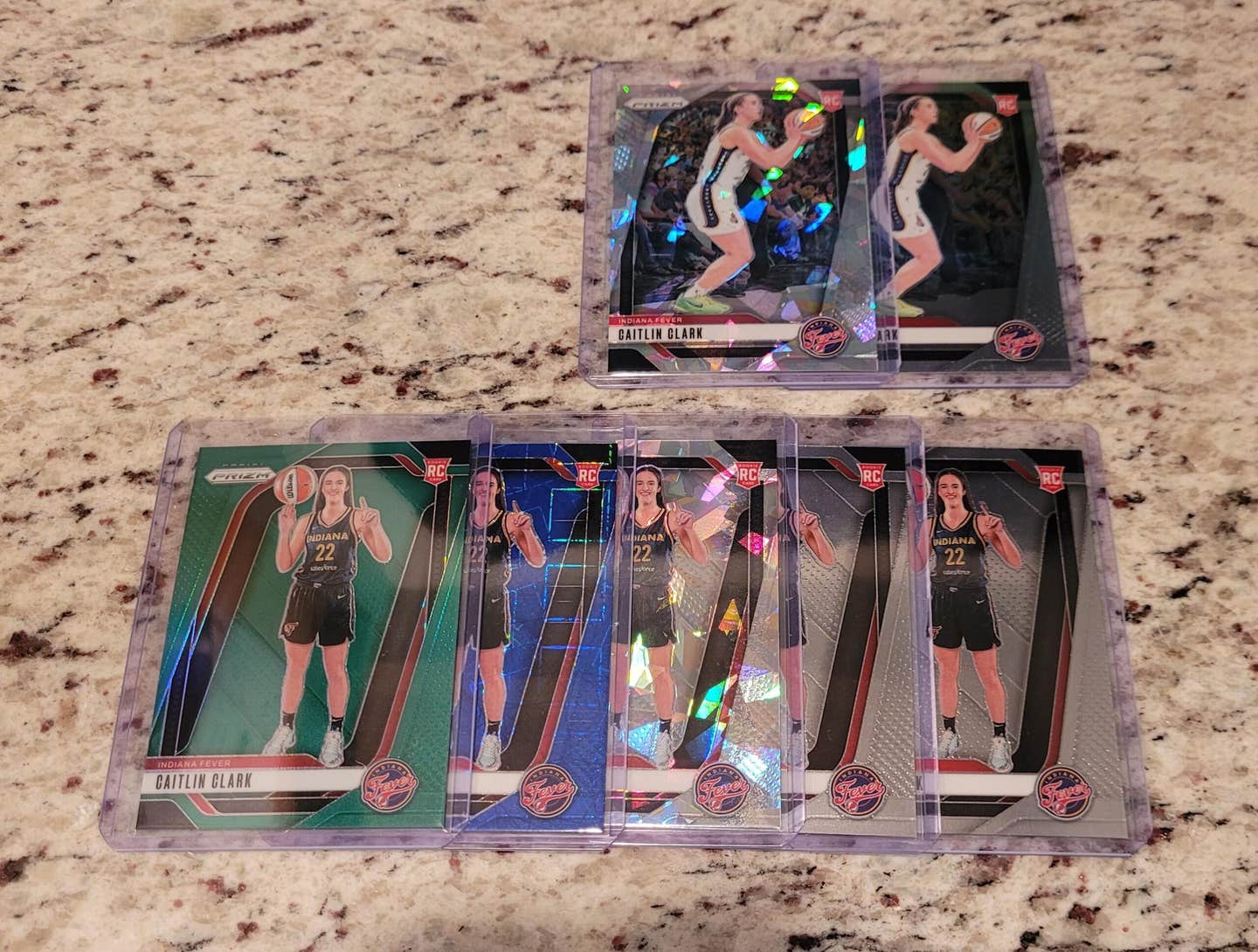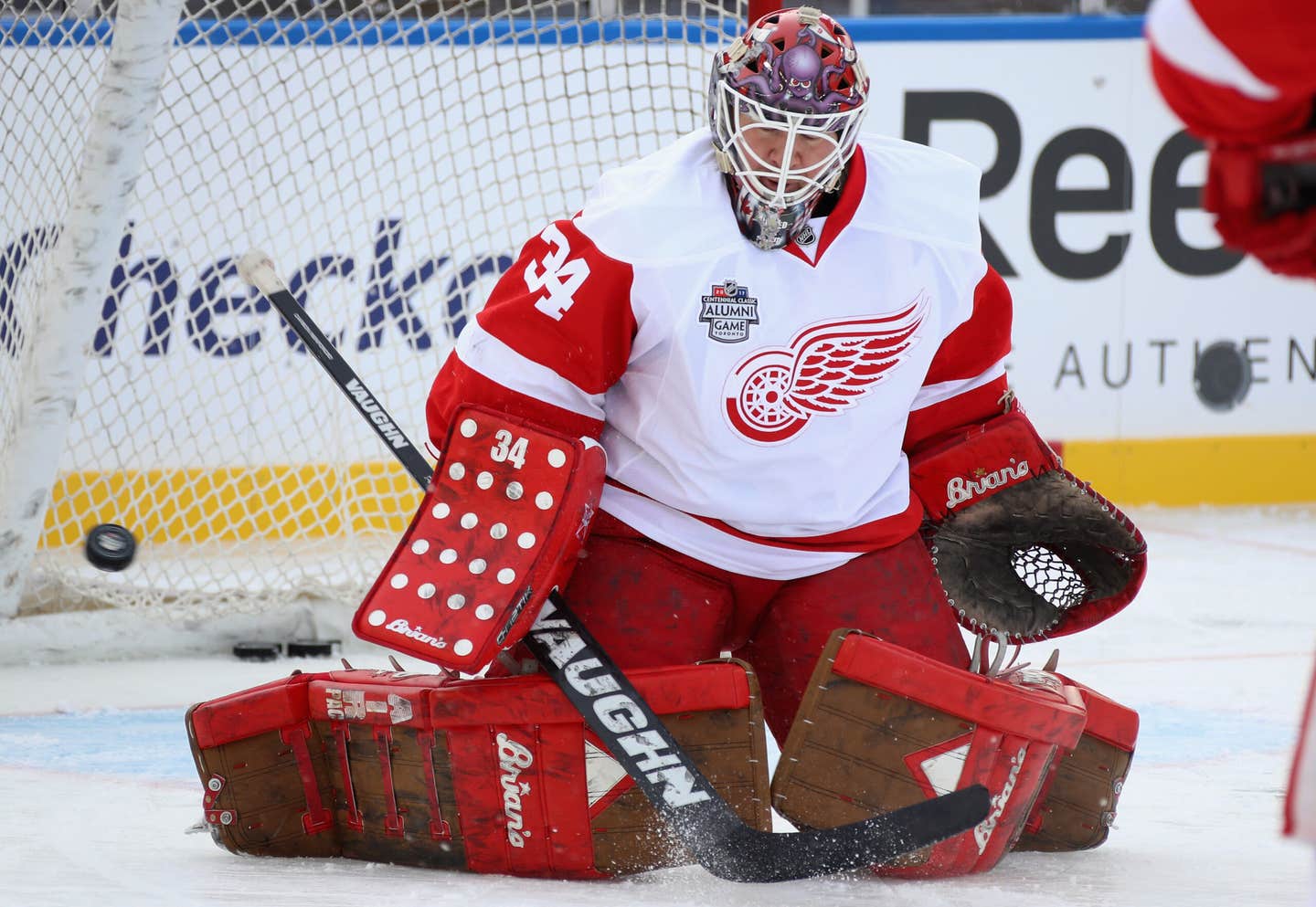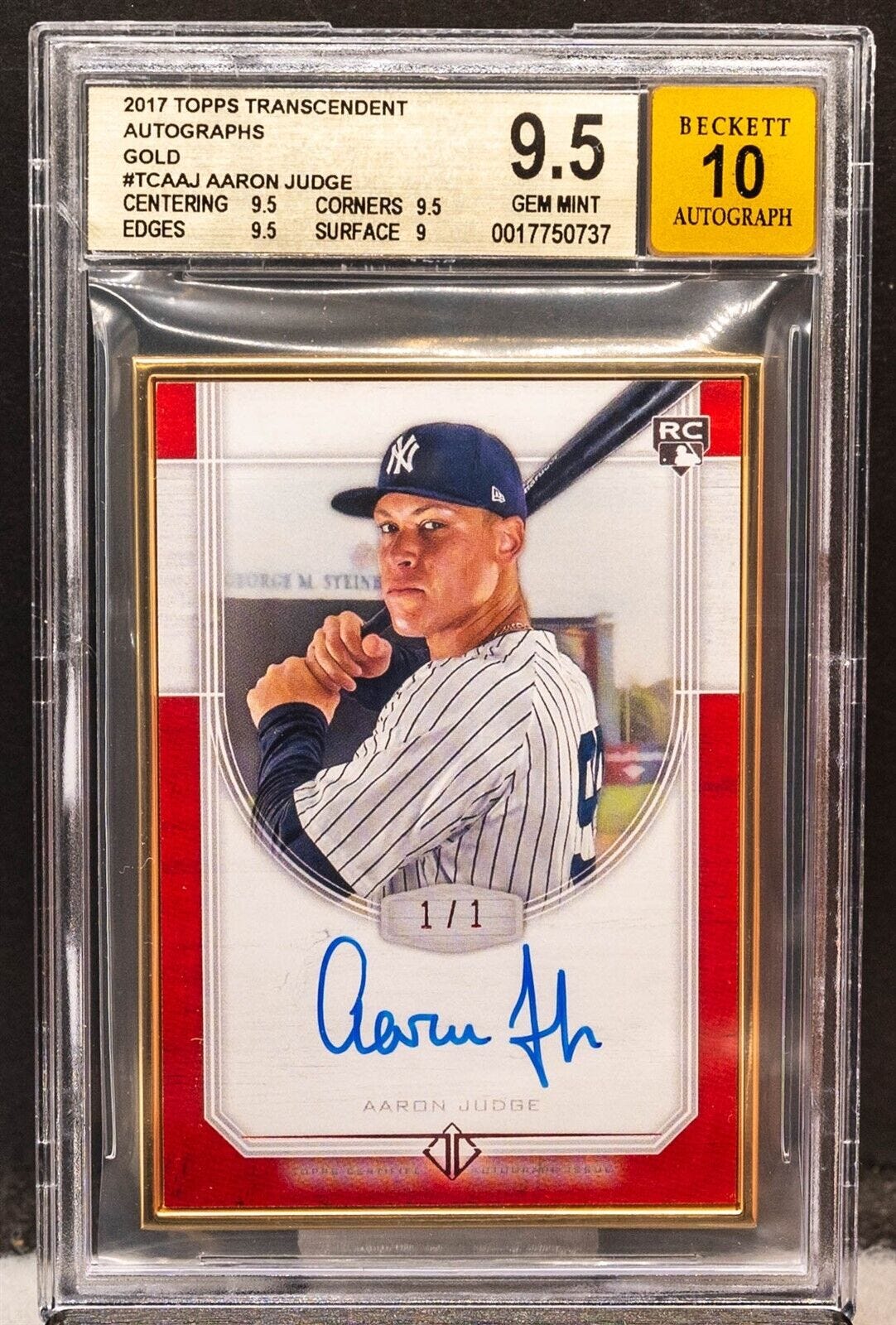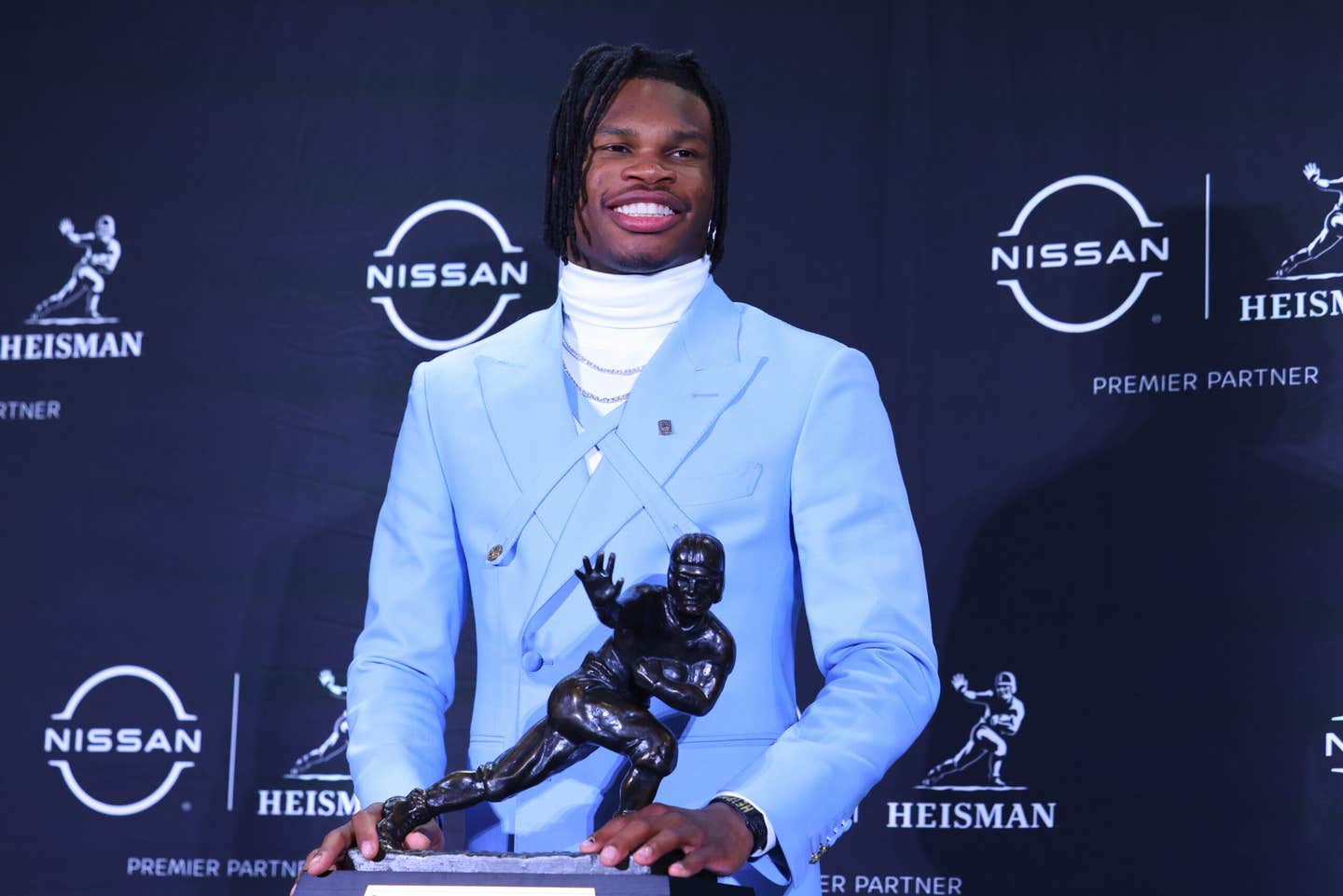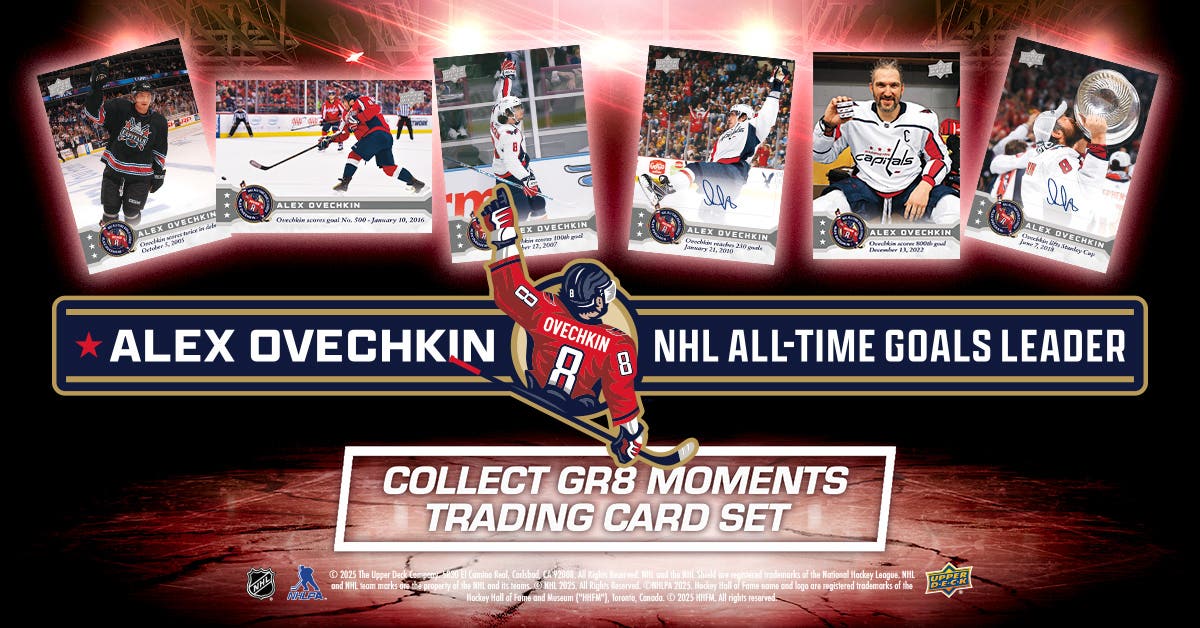
News
A closer look at 10 hockey card blunders
In the 100-plus years that companies have made hockey cards, countless mistakes have been made – from spelling a player’s name wrong, to getting a stat incorrect, to picturing the wrong guy. But every now and then, a card company gaffed so egregiously that you wonder if anyone was even paying attention. Here are the ten biggest hockey card blunders.
Trading a player who wasn’t actually traded: 1974-75 Topps #24 - Jacques Lemaire
Topps did a pretty good job of altering the photo of Jacques Lemaire on his 1974-75 card to make the Montreal Canadiens’ star look like he was now a member of the Buffalo Sabres. The only problem is that Lemaire was never traded to the Sabres.
Why Topps did this to the lifelong Canadiens player is a mystery, but the popular theory is that someone at the New York-based company heard a rumor that Lemaire was going to be traded to the Sabres, so Topps tried to get ahead of the curve by doctoring his picture. This mistake also carried over to the O-Pee-Chee version of the card that came out a few months later and must have confused many fans of Les Habitants that season.
Trading a player who wasn’t traded – again: 1979-80 Topps #63 - Dale McCourt
Five years later, Topps again made the same mistake – but this time, it was not without a good reason. In August of 1978, the Detroit Red Wings signed free agent goalie Rogie Vachon away from the L.A. Kings. Due to the oppressive free agency rules the NHL had at the time, to dissuade teams from signing players from other teams and to keep salaries low, the Kings were awarded Detroit’s young star Dale McCourt as compensation. But McCourt wanted to remain in Detroit, so he fought back. He filed an injunction in a U.S. District Court. He then sued the NHL, the NHL Players’ Association, the Kings and the Red Wings. He was allowed to remain with the Red Wings while the legal battle was sorted out.
By the end of the 1978-79 season, McCourt lost his case, and was awarded to the Kings. Thus, Topps deemed it necessary to go the extra mile for McCourt’s 1979-80 hockey card and really make it look like he was on the Kings; the superimposed logo, cut from a different photo, was an especially nice touch. But McCourt escalated his case to the U.S. Supreme Court. The Kings came to their senses, realizing that McCourt really did not want to play for them, and traded his rights back to the Red Wings for a first round pick. The O-Pee-Chee version of this card, which came out in early 1980, used the same photo but added the text “Now with Red Wings” – even though McCourt never left Detroit.
Promoting a player to management: 1985-86 O-Pee-Chee #220 - John Garrett
John Garrett’s 1985-86 O-Pee-Chee card boldly proclaims – in all capital letters, no less – “NOW ASSISTANT GENERAL MANAGER.” But Garrett was not the Canucks’ assistant GM in 1985-86 – nor would he ever be. So, what happened?
According to the book “Hockey Card Stories,” Garrett was offered the role of assistant GM by then-Canucks GM Harry Neale, but the job was contingent on Neale remaining with the Canucks. Garrett, who played only 10 games in 1984-85, saw that his career was winding down and accepted the offer. But Neale was fired on May 23, 1985; thus, no front office job for Garrett. Instead, he played three games in the minors at the start of the 1985-86 season, then retired and took a job as a broadcaster.
Stating that Garrett was now the Canucks’ assistant GM seems like an innocent mistake, until you consider that Neale was fired in May and the 1985-86 O-Pee-Chee set came out early the next year. The card company had a good seven months to get the story straight. Thirty years later, and even Wikipedia can’t get the story straight, either. Its entry on Garrett incorrectly states that he spent a season as the Canucks’ assistant GM. Wikipedia being wrong? That never happens.
Botching the Rookie of the Year’s rookie card: 1983-84 O-Pee-Chee #105 – Steve Larmer & #106 – Steve Ludzik
Accidentally swapping photos of two players from the same team has been done many times over, but probably not as bad as when O-Pee-Chee flip-flopped the pictures of Blackhawks teammates Steve Larmer and Steve Ludzik. Larmer appeared on Ludzik’s rookie card, while Ludzik was shown on Larmer’s rookie card.
You could almost forgive the mistake. Both players are named Steve and have six-letter, two-syllable surnames starting with “L.” Larmer wore number 28 while Ludzik wore 29. Even their career paths to that point were similar: both were born in Ontario, drafted in 1980, played three years of junior hockey for the Niagara Falls Flyers followed by a year in the minors with the New Brunswick Hawks. Additionally, both Steves were left-handed shots, roughly the same age, height and weight, and had blondish-brown hair. They might not have been the Sedin Twins, but at a glance you could understand why no one at O-Pee-Chee seemed to notice.
But there was one very big difference that set the two Steves apart: Larmer won the Calder Trophy as the NHL’s Rookie of the Year in 1983. Fortunately, Larmer’s photo correctly appears on his “Calder Trophy Winner” card.
Inadvertently advertising your competitors: 1991-92 Topps #162 – Adrien Plavsic & 1991-92 Topps Stadium Club #290 – Daniel Berthiaume
Upper Deck launched its inaugural set of hockey cards in 1990 and advertised on the boards at several NHL arenas during the 1990-91 season. This resulted in the Upper Deck name or logo appearing on cards made by Topps the next year. The 1991-92 Topps card of Adrian Plasvic has an advertisement that reads “Upper Deck Hockey Cards” in the background, though it is blurry, and most of it is obscured, so Topps must not have cared all that much.
But it was a different story for the 1991-92 Topps Stadium Club card of Daniel Berthiaume, which has an Upper Deck advertisement on the boards directly behind the L.A. Kings netminder – and in focus, too. To mask this, Topps airbrushed the second “P” in “UPPER DECK” to change it to a “B,” but it didn’t fool anyone – especially since the familiar diamond-shaped Upper Deck logo is visible through the net.
Coincidentally, part of an Upper Deck ad is visible in the background on Berthiaume’s 1991-92 Upper Deck card, though Upper Deck didn’t try and hide it.
Not getting players’ permission: 1991 7th Inning Sketch Memorial Cup Set
Card company 7th Inning Sketch produced cards for the Ontario Hockey League, Western Hockey League and Quebec Major Junior Hockey League during the 1990-91 season. The company also put out a Memorial Cup set, commemorating the season-end tournament between the three leagues. This 132-card set features players from the four competing teams, as well as 40 cards of players projected to be picked in early rounds of the upcoming NHL draft – including highly-touted wunderkind Eric Lindros. The Memorial Cup set also had a second card of Lindros, commemorating him as “7th Inning Sketch’s choice as Junior Player of the Year” – but really just an excuse to put two Lindros cards in the set, making it more desirable to collectors and speculators.
However, early in the production run, 17 of the cards were withdrawn, including the two Lindros cards. The two checklists were even reprinted and noted the withdrawn cards, but there was never an official explanation why Lindros, Pat Peake, Jason Dawe, Glen Murray and 12 others were pulled from the set.
This is just speculation, but perhaps 7th Inning Sketch assumed its rights to make cards of the three junior leagues also included rights to the Memorial Cup Tournament – but did not. As a result, the company would have had to secure permission from the players individually, and some of them declined to be included.
The Memorial Cup set was sold as a complete set in a window box. Most sets only have 115 cards, but earlier print runs – easily noticeable because one of the Lindros cards is visible – include all 132 cards.
Giving Wayne Gretzky’s stats to anyone who is not Wayne Gretzky: 1988-89 O-Pee-Chee #229 – Kevin Lowe
Defenseman Kevin Lowe had a fine, 19-year career in the NHL, and was an integral part of six Stanley Cup Championship teams – though he wasn’t exactly Bobby Orr when it came to scoring. But most of the stats on the back of Lowe’s 1988-89 O-Pee-Chee card are actually those of former teammate and league-leading scorer Wayne Gretzky. The card erroneously shows Gretzky’s stats from 1978-79 to 1986-87, though Lowe’s stats of nine goals and 15 assists in 70 games for 1987-88 are correct. Surely, one would think that a proofreader would have noticed that the stay-at-home D-man was credited with 1,544 points and think something was wrong.
Skipping a card: 1972-73 O-Pee-Chee #208 & 1975-76 O-Pee-Chee #395
Remember when you needed one card to complete your set – just one – but could never find it? You bought pack after pack, and asked all of your friends, but no one had this card. Today, that wouldn’t be too much of an issue, with the internet making it easier to finish a set. Back during the 1972-73 season, those who bought the annual O-Pee-Chee hockey set tore through countless packs yet could never find card #208 – because O-Pee-Chee never made it. The card was allegedly supposed to be the “Third Series Checklist,” which is odd, considering that card #208 would have been found in the Second Series. A few years later, O-Pee-Chee skipped card number #395 in its 1975-76 set, though there are two different checklists numbered #267, so the second card #267 was intended to be #395.
Jumping the (young) gun: 2001-02 Upper Deck #220 – Jared Aulin
During the 1990s, card companies dug deeper in efforts to include cards of prospects in NHL sets – from picturing recently drafted players, to junior-age prospects who had yet to be selected. But by the early 2000s, the NHLPA had enough, and stipulated that companies like Upper Deck could not put a player in a set of hockey cards licensed by the NHLPA unless he had appeared in at least one NHL game. (Goaltenders were eligible if they served as the backup for a game.)
But Upper Deck forgot this recent rule change and accidentally printed a Young Guns rookie card of Colorado Avalanche prospect Jared Aulin, who was selected in the second round of the 2000 NHL Draft. Upper Deck quickly caught its mistake and replaced Aulin’s card with a “throwback” Young Guns card of Brett Hull. Still, a handful of Aulin cards made its way into packs and show up on eBay from time to time.
Making more mistakes than thought possible: The Entire 1990-91 Pro Set Hockey set
Pro Set made many mistakes when the company launched its inaugural set of hockey cards for the 1990-91 season; so many mistakes that it makes the 1981 Donruss baseball card set look tame by comparison. Pro Set rushed the production of its Series One hockey set and it shows. In fact, the very first card in the set has an error: perennial all-star defenseman Ray Bourque has his last name misspelled as “Borque.” (To be fair, Pro Set misspelled journeyman winger Phil Bourque’s last name on his card as well.) Between the 405-card Series One and the 300-card Series Two, over 100 cards have some sort of gaffe, from spelling errors and typos, to picturing the wrong player, to factual errors or other inconsistencies. Not every error card was corrected, either. But the number of uncorrected errors skyrockets if you consider this: cards list up to four years of stats on the back, but Series One cards erroneously show the player’s four-year total as his career total, even if he played more than four seasons. Pro Set got more wrong than right with its first hockey release. u
Sal Barry is a freelance contributor for Sports Collectors Digest. He can be reached at sjb@puckjunk.com or on Twitter @puckjunk.



